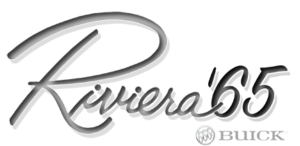Description
Next steps
If you have been following my articles you know I prefer to restore the original part, if possible. If that’s not possible, I‘ll create my my own using material available here in Switzerland for the restoration.
Even before I removed the package shelf, I knew that it was badly faded and worn due to use, sun and moisture (Fig. 1). After I removed it, I saw there were areas that had cracked and needed repair, especially the lower extentions to attach the shelf (Figs. 2-4). I repaired the cracked areas with epoxy, sanding the cured epoxy using coarse to fine sandpaper. (Fig. 5). The epoxy will help those areas to remain rigid and survive for many more years. After sanding the shelf smooth, I cleaned it with an alcohol-soaked cloth.
A plastic lip is sewn across the back of the shelf must be left attached (clearly visible in Figs. 1, 3 and 4).
The next step is to cut and attach the new vinyl. I used the same vinyl material that I applied to the doors (Riview Sept/Oct 2017). Cut a size large enough to cover the shelf allowing suffient overhang (Fig. 6). I used clamps as shown in Fig. 7 to prevent slippage and hold it in place for cutting. Turn the shelf over and use scissors to trim around the edges, leaving a 2.5-3cm edge (Fig. 8).
The most important step in the process is to glue the vinyl to the package shelf. Use a very strong contact spray which is resistant to high heat. Solar radiation beaming down through the rear window can reach incredibly high temperatures which can dissolve a cheap glue. It is also very important that the vinyl and shelf are free of dust particles. Any slight bumps would later be a distraction and over time, with sun exposure and heat, can cause unsightly bubbles.
Be sure to cover the entire surface of the vinyl and the shelf with the contact spray. Allow the surfaces to dry slightly before they are brought together. Be careful because once attached it is very difficult to seperate them. When ready to attach, lay the vinyl on a flat surface and carefully place the shelf on top (Fig. 8).
Start with the edge that hangs down between the rear seats and slowly roll the shelf onto the vinyl until it reaches the back side where the plastic lip is attached. Then turn it over and use a squeegie or a dry cotton cloth to gently but firmly press from front to back. The extra glue that is pushed out will give you enough to fold over the edges and glue them in place. Temporarily lift the plastic lip that runs across the back of the shelf and press the vinyl under it. If you did everything right, it should look like Fig. 9.
My car has the optional rear window defroster system that was offered in 1963-65. Simply cut the original holes in the vinyl with a scalpel or Exacto knife and attach the grille cover (Fig. 10). The shelf is now ready to be installed.
Voilà! This concludes my series on interior restorations. I hope you have enjoyed this series and found the information helpful. I’ll return when my restoration has been completed and submit facts and photos for a Member’s Showcase.
Editor – This entire series will soon be posted on the ROA Website for Member’s Only under “Articles from the Riview”.

